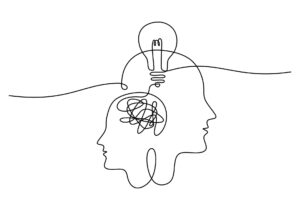Acupuncture for Back Pain: An Ancient Solution for a Modern Problem
Back pain is a common ailment that affects millions of people worldwide. It can be a debilitating condition that hampers one’s ability to perform daily tasks, work, and enjoy a pain-free life. According to the World Health Organization, back pain is the leading cause of disability globally, and it affects people of all ages. It can range from mild discomfort to chronic, severe pain, often leading to a decreased quality of life.
acupuncture as an alternative treatment
In recent years, individuals suffering from back pain have been exploring alternative therapies to alleviate their discomfort. One such ancient and time-tested approach is acupuncture. Acupuncture involves the insertion of thin needles into specific points on the body to stimulate natural healing processes. While it may sound unconventional, acupuncture has gained popularity as a holistic and effective approach to managing back pain. Let’s explore the historical roots of acupuncture, how it works scientifically, the evidence supporting its efficacy, safety considerations, and its role within an integrative approach to back pain management.
Understanding Back Pain, Common causes and types
Back pain can have various causes, including muscle strain, ligament sprain, herniated discs, spinal stenosis, and even underlying medical conditions. It can manifest as acute pain, chronic discomfort, or intermittent episodes. Understanding the underlying causes and the specific type of back pain is crucial in choosing an appropriate treatment approach.
Conventional treatments and their limitations
Conventional treatments for back pain often include medications, physical therapy, and, in severe cases, surgery. While these approaches can be effective for some individuals, they may have limitations, including potential side effects, the risk of addiction to pain medications, and the invasive nature of surgical procedures.
Given the limitations of conventional treatments, there is a growing need for alternative therapies that can provide effective relief for back pain while minimizing potential drawbacks. Acupuncture emerges as a promising alternative that addresses the root causes of pain without relying on medications or surgery.
Origins and development of acupuncture in traditional Chinese medicine
Acupuncture has its origins in traditional Chinese medicine (TCM), dating back over 2,500 years. It is based on the concept of Qi (pronounced “chee”), the vital life force that flows through the body along meridians. The balance of Qi is essential for health, and disruptions in its flow are believed to lead to various ailments, including pain. Acupuncture was developed to restore the balance of Qi and promote healing.
Philosophical foundations: Qi, meridians, and balance
In TCM, the body’s meridians are pathways through which Qi flows. Acupuncture points along these meridians are stimulated to unblock Qi and restore balance. The philosophy behind acupuncture involves harmonizing the body’s Yin and Yang energies, aiming for equilibrium and health.
Acupuncture gained recognition in the Western world during the 20th century. It evolved from a mystical and esoteric practice to a scientifically studied and respected form of therapy. Today, acupuncture is offered in healthcare settings alongside conventional treatments, providing patients with a more comprehensive approach to pain management.
Acupuncture and Back Pain Relief, How It Works
While the traditional explanations of acupuncture revolve around Qi and meridians, modern science has offered alternative explanations for its efficacy. Some scientific theories suggest acupuncture stimulates the nervous system, releasing natural pain-relieving chemicals like endorphins. Additionally, it may influence the body’s inflammatory responses, reducing pain and inflammation.
1. Neurological theories
Acupuncture needles are believed to activate specific nerve fibers that transmit signals to the brain. This stimulation can lead to the release of neurotransmitters, altering pain perception and promoting relaxation.
2. Endorphin release and pain management
One of the most well-documented effects of acupuncture is the release of endorphins, the body’s natural painkillers. This endorphin release can help manage pain and promote a sense of well-being.
Acupuncture treatment for back pain typically involves several steps:
1. Assessment and acupuncture point selection
A qualified acupuncturist will assess the patient’s condition, considering the type and location of back pain. Based on this assessment, they will determine the appropriate acupuncture points to target during the session.
2. The acupuncture session: What to expect
During an acupuncture session, thin needles are inserted into the selected points on the body. The needles are usually painless, and patients often report a sensation of relaxation and mild tingling. The session typically lasts 20-30 minutes, and patients may require multiple sessions for optimal results.
Overview of key studies and clinical trials
In recent years, numerous studies and clinical trials have explored the efficacy of acupuncture in treating back pain. These studies have provided valuable insights into the potential benefits of acupuncture as a non-invasive and drug-free approach to pain management.
Efficacy of acupuncture in treating back pain
Research indicates that acupuncture can effectively reduce back pain, improve function, and enhance the quality of life for individuals suffering from this condition. The relief provided by acupuncture may be long-lasting, making it a viable option for chronic back pain.
Comparative analysis with other treatments
Comparative studies have shown that acupuncture can be as effective as conventional treatments for back pain, such as medication or physical therapy. Additionally, acupuncture’s low risk of adverse effects makes it an attractive choice for those seeking a safer alternative.
Acupuncture is generally considered safe when administered by a qualified and licensed practitioner. However, like any medical procedure, there are potential risks and side effects. These may include minor bleeding, bruising, or temporary discomfort at the needle insertion site. Serious complications are exceedingly rare when a skilled professional performs acupuncture.
Choosing a qualified acupuncture practitioner is crucial to ensure safety and optimal results. Look for licensed acupuncturists who have completed accredited training programs and adhere to strict hygiene and safety standards.
While acupuncture can benefit many individuals with back pain, it may not be suitable for everyone. Patients with certain medical conditions, such as bleeding disorders or those on blood-thinning medications, should consult with their healthcare provider before pursuing acupuncture. Additionally, those with a fear of needles may want to explore alternative therapies.
Integrative Approach to Back Pain
Combining acupuncture with other treatments
An integrative approach to back pain management involves combining acupuncture with other therapies, such as physical therapy, chiropractic care, or massage. This holistic approach addresses the multifaceted nature of back pain, providing patients with a comprehensive and tailored treatment
Conclusion
Acupuncture offers a promising path toward relief from the burdensome grip of back pain. With its ancient roots, modern scientific support, and a growing body of evidence showcasing its effectiveness, acupuncture is an attractive alternative to conventional treatments. By choosing the White Crane Clinic, you can embark on a journey towards a pain-free and healthier life. We invite you to take the first step towards wellness by contacting us for a free consultation. Our experienced and qualified practitioners will assess your condition and determine if acupuncture is the right solution for your back pain. Don’t let back pain hold you back from the activities you love and the life you deserve. Reach out to us today; together, we can work towards a brighter, pain-free future. Your well-being is our priority.









